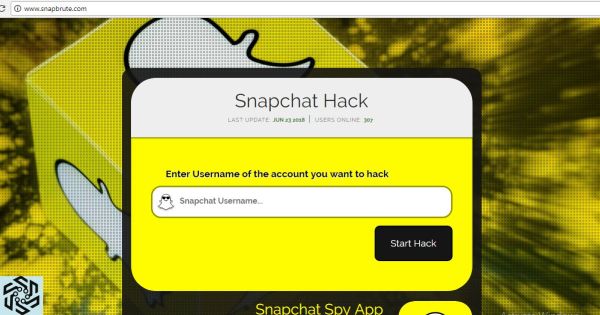Snapchat is a popular social media platform known for its ephemeral nature, allowing users to send self-destructing photos and videos. However, like any online service, it’s not immune to security concerns. One common question that arises is whether someone can hack your Snapchat account simply by adding you as a friend or contact.
In this article, we’ll explore the various aspects of this question, including potential risks, security measures, and steps to protect your Snapchat account.
Understanding Snapchat’s Security Features
Before diving into the hacking concerns, it’s important to understand Snapchat’s built-in security features. Snapchat has implemented several measures to protect users and their data:
User Authentication
Snapchat requires users to create an account with a valid email address or mobile phone number. After account creation, a user must log in with a username and password. This two-step authentication process helps ensure that only the account owner can access the account.
Privacy Settings
To provide a clear overview of Snapchat’s privacy settings and how they impact your account’s security, let’s examine the differences between public and private accounts:
| Privacy Setting | Public Account | Private Account |
| Who Can Send You Snaps? | Anyone | Only Friends |
| Who Can View Your Stories? | Anyone | Only Friends |
| Who Can Contact You? | Anyone | Only Friends |
| Friend Requests | Receive from Anyone | Receive from Friends Only |
As seen in the table, setting your account to private significantly restricts who can interact with you on Snapchat. It’s a valuable tool in maintaining control over your account’s security.
Snap Map
Snap Map is a feature that allows users to share their location with friends. While it can be a fun way to connect with friends, it’s crucial to use this feature judiciously and only share your location with trusted contacts.
Two-Factor Authentication
Snapchat offers two-factor authentication (2FA), which provides an extra layer of security. When enabled, 2FA sends a code to your mobile device that you must enter in addition to your password when logging in.
With these security features in place, Snapchat aims to protect users from unauthorized access and potential hacking attempts. However, it’s still essential to remain vigilant and follow best practices to ensure your account’s safety.
Risks Associated with Accepting Friend Requests on Snapchat
While Snapchat has robust security features, there are still some risks associated with accepting friend requests from unfamiliar users. Here are the potential concerns:
Privacy Invasion
By adding someone as a friend on Snapchat, you grant them access to your stories, which can reveal a lot about your daily life. If the person you added is malicious, they might misuse this information or share it with others without your consent.
Phishing Attempts
Malicious users may send deceptive links or messages designed to steal your login credentials or personal information. This is a common tactic used by hackers to compromise Snapchat accounts.
Unwanted Messages
Accepting friend requests from strangers may result in a flood of unwanted messages, snaps, or video calls. This can be a nuisance and disrupt your Snapchat experience.
Impersonation
Hackers can impersonate someone you know or trust to gain access to your account. They may create a fake profile that appears to be a friend, tricking you into adding them.
Can Hackers Actually Hack Your Snapchat by Adding You
In most cases, adding someone as a friend on Snapchat does not directly lead to your account being hacked. However, it can increase the risk of certain security issues, as outlined above. Snapchat’s two-step authentication process and security features make it challenging for hackers to hack your Snapchat by adding you gain unauthorized access just by being added as a friend.
Here are some ways in which a hacker might attempt to compromise your Snapchat account:
Phishing Attacks
Phishing is a common method used by hackers to trick users into revealing their login credentials. They may send you a fake link that looks like a Snapchat login page. If you enter your information on this bogus page, the hacker can obtain your username and password.
Credential Stuffing
If you use the same username and password for multiple online accounts, a hacker who obtains your credentials from another data breach could potentially use them to access your Snapchat account.
Social Engineering
Social engineering involves manipulating individuals into divulging confidential information. A hacker could pretend to be someone you trust and request sensitive data, such as your login credentials, through direct messages.
In these scenarios, the hacker does not need to be added as a friend on Snapchat to initiate an attack. Instead, they exploit human psychology or security vulnerabilities to compromise your account.
Protecting Your Snapchat Account
To safeguard your Snapchat account and reduce the risks associated with accepting friend requests, consider the following security measures:
Enable Two-Factor Authentication
Two-factor authentication (2FA) is a vital security feature that adds an extra layer of protection. When enabled, Snapchat will send a verification code to your mobile device every time you log in. This code must be entered alongside your password, making it much more challenging for hackers to gain access.
Be Cautious with Links and Messages
Avoid clicking on links or downloading files from unknown or suspicious sources. Be vigilant about unsolicited messages, and never share your login credentials with anyone, even if they claim to be a friend.
Vet Friend Requests
Before accepting a friend request, review the user’s profile and history. If the account appears suspicious or lacks any activity, it’s best to decline the request.
Adjust Your Privacy Settings
Review and adjust your privacy settings to limit who can send you snaps and view your stories. This can help you maintain control over your Snapchat experience.
Keep Your Password Secure
Choose a strong, unique password for your Snapchat account, ensuring it’s not easily guessable or related to personal information. To further enhance security, update your password regularly, and if you’re wondering how to turn off active status on Snapchat, consider checking your privacy settings as well. Avoid using the same password for multiple services to prevent credential stuffing attacks.
Educate Yourself and Others
Stay informed about the latest security threats and educate your friends and family about best practices for staying safe on Snapchat and other online platforms.
What to Do If Your Snapchat Account Is Compromised

If you suspect that your Snapchat account has been compromised, take immediate action to regain control and protect your data:
Change Your Password
Log in to your account and change your password to a strong, unique one that you haven’t used on other platforms. This will prevent the hacker from continuing to access your account.
Log Out of All Devices
Snapchat provides an option to log out of your account on all devices. This can help you kick out any unauthorized users who may be logged in.
Contact Snapchat Support
If you can’t regain control of your account or suspect that it’s being misused, contact Snapchat’s support team. They can guide you through the account recovery process and help secure your account.
Conclusion
While adding someone as a friend on Snapchat does not directly lead to hacking, it can expose you to certain security risks. To ensure the safety of your Snapchat account, it’s essential to understand the platform’s security features, adopt best practices, and remain vigilant when accepting friend requests from unfamiliar users.
By following the provided security tips and being cautious online, you can enjoy the fun and engaging world of Snapchat while protecting your privacy and data from potential threats.











